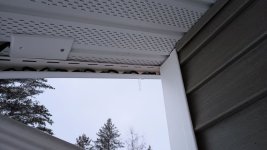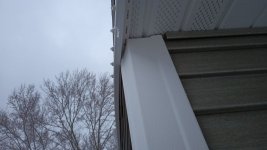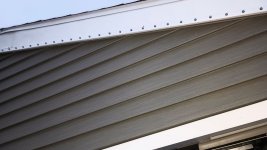Working on putting permanently mounted pixels around the roofline. Using J-channel under the eaves with good success on most of the house:

However, I have one section over the garage that's a gable end with no overhang:

Wondering if anyone has any ideas on how to attack this. Since it's permanent I want to keep the wiring hidden. Ideally I'd also like to avoid punching holes in the facia trim but I'm not sure there's any way around that. I currently have only bullet pixels. Right now I'm thinking about the J-channel method shown here, but that would require square pixels.
Any other ideas out there?
Thanks in advance,
Andy

However, I have one section over the garage that's a gable end with no overhang:

Wondering if anyone has any ideas on how to attack this. Since it's permanent I want to keep the wiring hidden. Ideally I'd also like to avoid punching holes in the facia trim but I'm not sure there's any way around that. I currently have only bullet pixels. Right now I'm thinking about the J-channel method shown here, but that would require square pixels.
Any other ideas out there?
Thanks in advance,
Andy



